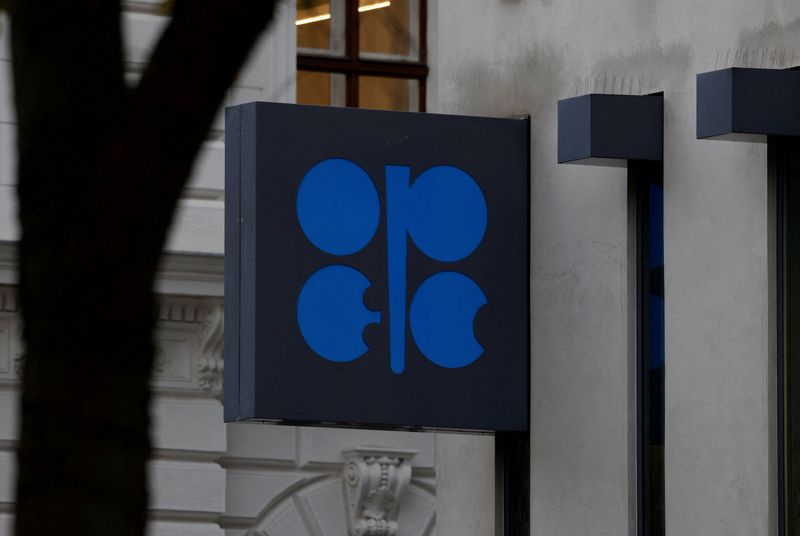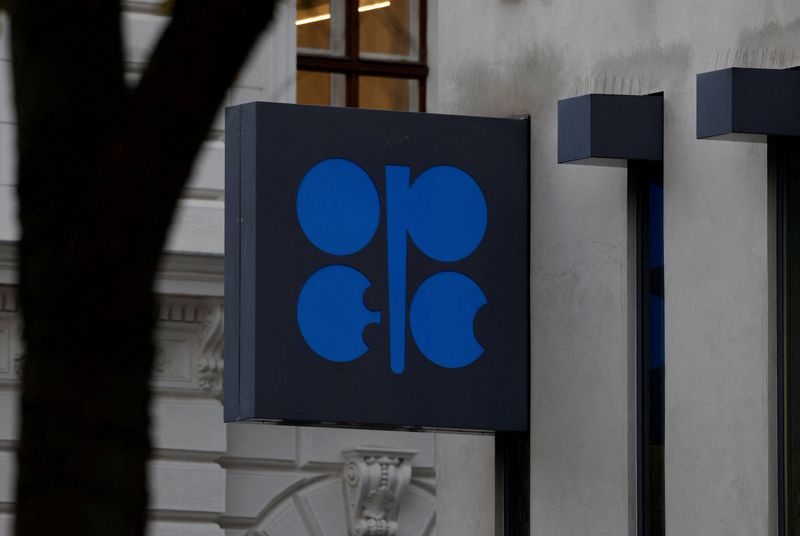Commodities
Explainer-What OPEC+ oil output cuts are currently in place?

By Alex Lawler and Yousef Saba
LONDON (Reuters) – OPEC+ oil producers are scheduled to meet on June 2 to decide their next output policy steps, including whether to extend voluntary production cuts totalling about 2.2 million barrels per day (bpd), which expire in the first half of 2024.
These voluntary cuts from the Organization of the Petroleum Exporting Countries and allies, known as OPEC+, come on top of earlier reductions of 3.66 million bpd that were announced in various steps since late 2022 and which are valid until the end of 2024.
Total pledged cuts therefore currently amount to 5.86 million bpd, equal to about 5.7% of daily world demand, according to Reuters calculations.
WHAT ARE THE MOST RECENT CUTS?
The latest 2.2 million bpd round of voluntary cuts was announced by the individual countries on Nov. 30 2023.
Initially in place for the first quarter of 2024, the countries in March extended them until the end of June and Russia slightly adjusted how its cut would be implemented.
Included in the 2.2 million bpd is an extension of existing Saudi and Russian voluntary cuts from 2023 of 1.3 million bpd, meaning the newest element of the cut is about 900,000 bpd.
WHAT WERE THE EARLIER CUTS?
Before November 2023, OPEC+ was making production cuts of about 5 million bpd, comprising 1.3 million bpd of Saudi and Russian voluntary cuts put in place earlier in 2023, and 3.66 million bpd agreed in previous steps.
Of the 3.66 million bpd, 2 million bpd was agreed by OPEC+ in late 2022 and several members agreed voluntary cuts of 1.66 million bpd in April 2023.
OPEC+ when it met in June 2023 extended the 3.66 million bpd of cuts until the end of 2024.
HOW DO THE OUTPUT CUTS AFFECT TARGETS?
The following table shows OPEC+ pledged cuts and production targets for the first half of 2024 in millions of barrels per day, based on information from OPEC, individual nations and Reuters calculations.
Totals are rounded.
Actual output
Country H1 2024 Implied H1 Productio (April 2024)*
voluntary 2024 n target
cuts pledged targets after H1
2024
0.91
Algeria 0.051 0.908 0.959
Congo
0.000 0.277 0.277 0.26
0.05
Equatorial Guinea 0.000 0.070 0.070
Gabon 0.21
0.000 0.169 0.169
Iraq 4.24
0.220 4.009 4.22
Kuwait 2.49
0.135 2.413 2.548
Nigeria 0.000 1.500 1.500 1.28
Saudi 9.03
Arabia 1.000 8.978 9.978
UAE 3.15
0.163 2.912 3.075
0.48
Azerbaijan 0.000 0.551 0.551
1.59
Kazakhstan 0.082 1.468 1.55
Mexico 1.6
0.000 1.753 1.753
Oman 0.76
0.042 0.759 0.801
9.3
Russia** 0.500 8.949 9.449
0 0.73
Bahrain*** 0.196 0.196
Brunei 0
0.083 0.083
0
Malaysia 0.401 0.401
South 0
Sudan 0.124 0.124
Sudan 0
0.064 0.064
Total 21.62
OPEC-9 1.569 21.236 22.796
Total 14.46
Non-OPEC 0.624 14.348 14.972
Total
OPEC+ 2.2 35.60 37.80 36.08
* International Energy Agency figures excluding OPEC members Iran, Libya and Venezuela which are exempt from making cuts

** Russia initially promised to deepen cuts to 500,000 bpd of oil and oil product exports in the first quarter 2024. In March, Russia said it would cut 471,000 bpd from production and exports in April – June. The table is calculated using the initial figure
*** Figure is total for Bahrain, Brunei, Malaysia, Sudan and South Sudan
Commodities
Oil prices rise; U.S. crude inventories plunge, Russia-Ukraine truce eyed
Commodities
India’s Reliance to stop buying Venezuelan oil over US tariffs, sources say
Commodities
Oil prices climb on Venezuela supply worries

 Forex3 years ago
Forex3 years agoForex Today: the dollar is gaining strength amid gloomy sentiment at the start of the Fed’s week

 Forex3 years ago
Forex3 years agoUnbiased review of Pocket Option broker

 Forex3 years ago
Forex3 years agoDollar to pound sterling exchange rate today: Pound plummeted to its lowest since 1985

 Forex3 years ago
Forex3 years agoHow is the Australian dollar doing today?

 Cryptocurrency3 years ago
Cryptocurrency3 years agoWhat happened in the crypto market – current events today

 World3 years ago
World3 years agoWhy are modern video games an art form?

 Commodities3 years ago
Commodities3 years agoCopper continues to fall in price on expectations of lower demand in China

 Economy3 years ago
Economy3 years agoCrude oil tankers double in price due to EU anti-Russian sanctions























